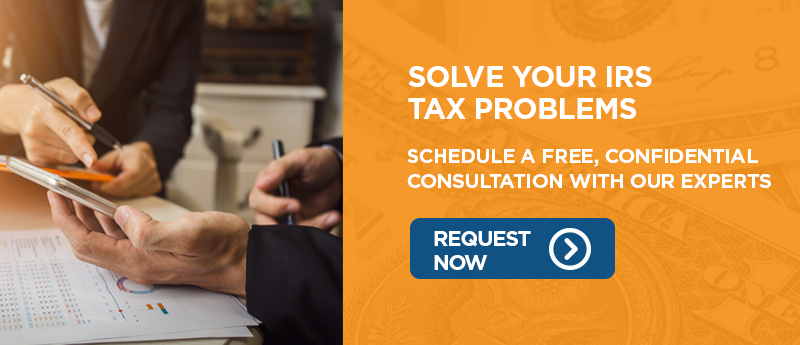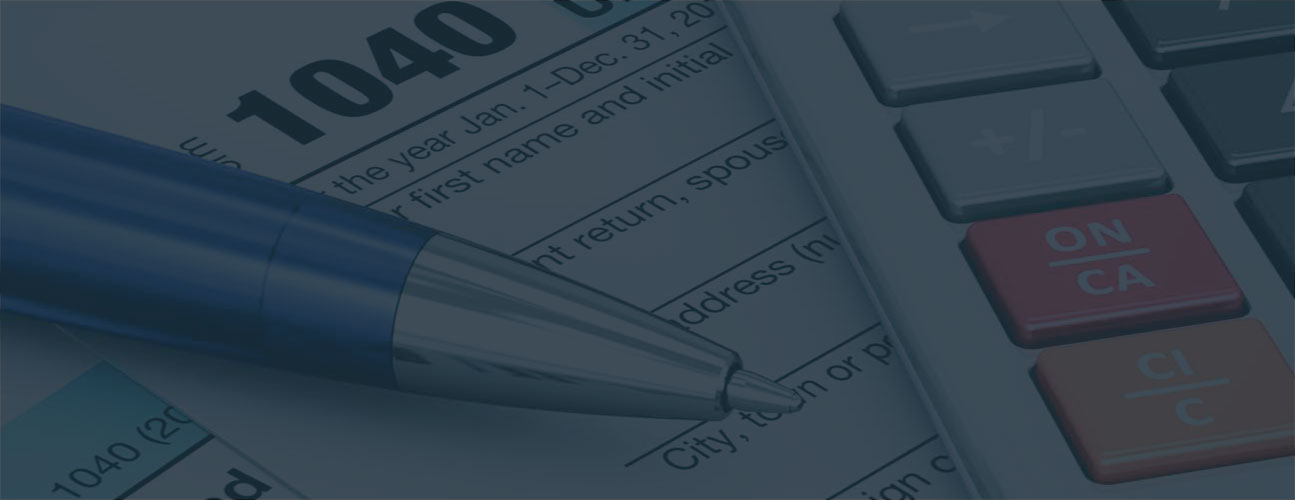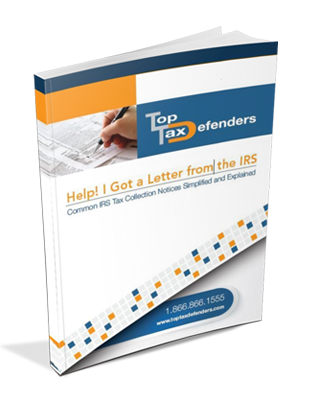If you owe back taxes to the IRS, you may be in danger of receiving a tax levy on your bank account. Once the IRS places a tax levy on your bank account, the bank will be required to immediately freeze your assets, meaning you will have no access to your account. You have 21 days from the placing of the tax levy to pay your back taxes in full. Fail to do so, and your bank will be obligated to send the money in your account to the IRS.
>>Click Here For an Overview of the IRS Collections Process
Watch Top Tax Defenders Director of Operations Priya Mishra explain the different types of wage garnishments, including a tax levy on your bank account, and learn a little about how our team can help slow down the IRS Collections process.
Defining a Tax Levy
A federal tax levy is a tool that allows the government to legally seize your property to pay off your delinquent tax debt, including interest and penalties. A tax levy can take the form of:
- Wage garnishment
- Seizing assets
- Seizing bank accounts, investment accounts, and accounts receivable (from your business)
- Seizing payments from social security, pensions, and insurance policies
- A tax refund offset, where your tax refund is seized to pay down tax debt
- Seizing stocks and bonds
A federal tax levy is issued when a federal tax lien brings no taxpayer action to pay or arrange to pay a tax debt.
>>Click Here to Learn More About What a Tax Levy Is
Types of Tax Levies
Learn more about the different forms of tax levies below.
Wage Garnishment
The IRS sends Form 688-W to your employer, who is required to withhold a specified portion of your wages, salary, bonuses, and commissions. The form is also used to signal intent to levy any retirement or benefit income your employer holds.
Most employers will inform you of the wage garnishment notice. You may be asked to fill out a form to determine the number of dependents you claim. Then, the employer uses IRS Publication 1494 to determine how much to withhold from your wages, so you continue to receive some income to cover necessary living expenses.
Bank Levy
A bank levy is issued for either personal or business bank accounts. The bank freezes your accounts for 21 days from the time it receives the notice. You will have no access to any funds in those accounts. If you add funds to the account after the levy takes effect, those will not be impacted.
You have 21 days to make arrangements to resolve your tax debt through payment in full, an installment plan agreement, or another form of payment.
Property Seizure
The IRS can seize your house or other real estate. It can also seize your car, boat, or personal property such as artwork and jewelry. The agency can even take property owned by another on your behalf.
1099 Levy
If you are an independent contractor, the IRS can issue a series of 1099 levies allowing it to continue to collect any 1099 payments you receive until the tax liability is satisfied.
Social Security Levy
As of 2002, Social Security benefits paid under Title II (Federal Old-Age, Survivors, and Disability Insurance Benefits) are subject to a 15% levy under the Federal Payment Levy Program (FPLP) to satisfy delinquent tax bills.
However, any lump-sum death benefit or benefits paid to children are exempt under this program. Also, supplemental security income and payments with partial withholding that pay a Social Security liability are not eligible for levy under FPLP.
In 2011, new restrictions were placed on the program. Taxpayers who receive Social Security payments but have income that falls at or below the levels established under the Department of Health and Human Resources poverty guidelines are exempt from a levy on their Social Security benefits.
IRS Offset
If you are due any tax refund, the IRS will seize it to pay down your tax bill. Even if you are already in an installment agreement and making monthly payments, your refund will be applied to offset your total liability.
IRS offsets are handled by the Department of Treasury’s Bureau of Fiscal Service instead of the IRS. You receive a notice in the mail informing you of how much of your refund is being applied to the offset and the total refund you are owed.
The letter will also state which agency received the offset funds since it can pay off multiple federal tax liabilities, including student loans, child and spousal support, unemployment compensation liabilities, and state income tax obligations. You can dispute the offset by contacting the agency that received the funds.
>>Click Here For What You Need to Know About 4 Common Tax Levies
IRS Requirements for Imposing a Tax Levy
To impose a levy, the IRS must follow specific steps.
- Assess the tax you owe and send a Notice and Demand for Payment. This usually occurs after you file a tax return. If you do not file a return, the IRS can file a substitute for a tax return (STR) on your behalf.
- You fail to pay or take steps to resolve the debt, meeting the second requirement.
- The IRS must send you a Final Notice of Intent to Levy and Notice of Your Right to a Hearing. The IRS sends this notice to your last known address 30 days before imposing a levy.
Any remaining funds after the IRS sells your property and applies the proceeds to your tax bill will be refunded to you.
>>Click Here to Learn More About the IRS Intent to Levy Notice
Some Things Cannot Be Seized
If you are subject to a tax levy of any kind, you're probably wondering, just how much the IRS can take. Fortunately, there are some limitations to what the IRS can take through tax levies. Here are a few assets the agency cannot seize:
- Unemployment benefits
- Social security payments - including those sent directly to your bank account
- Critical annuity and pension benefits
- Certain disability payments connected to service
- Worker’s compensation
- Some public assistance payments
- Court-ordered child support payment income - including that placed or sent directly to your bank account
- Undelivered mail
- Some items or tools necessary for school, work, or a trade up to a particular value
- Particular furniture and household items up to a specific value
- Minimum exemptions for salaries or income
- Assistance under the Job Training Partnership Act
Although the IRS can seize your primary residence with a tax levy, the agency will rarely do so. The IRS tends to use this as a last resort and typically only for serious cases of tax fraud or other problems.
If it is seized, you will receive a sale of property notice, which must be posted for 10 days before the sale proceeds. Any funds remaining after your tax debt is settled are refunded to you.
>>Click Here to Learn Which Accounts Are Subject to An IRS Levy
How a Tax Levy Impacts You
Wage garnishment can shrink your paycheck, making it difficult to keep up with payments to other creditors. Those creditors will report you to the credit bureaus, creating a long-term impact on your credit score.
Your bank accounts are frozen, so you can't access those funds to pay bills. The bank is not required to notify you that your account is frozen, so you might only find out when you try to withdraw money or a check bounces. However, many banks make it a policy to notify account holders of these issues.
>>Click Here to Learn About How You Are Impacted by a Tax Levy
How to Remove a Tax Levy
If you can't avoid a tax levy, you have several options for removing it.
Pay Off Your Tax Debt
This is the simplest way to remove a tax levy or to avoid one in the first place. Once you pay off your delinquent taxes, interest, and penalties, you can request a release of the tax levy.
If you can’t pay the entire amount at once, sign up for an IRS installment payment plan and pay off your tax debt over time. If the amount is more than you can pay even with a plan, you can negotiate an Offer in Compromise.
Prove Financial Hardship
You may be eligible for Currently Not Collectible status due to low income. CNC places your IRS account on indefinite hold until your income level rises. Once you start making more money, the IRS will continue its collection efforts.
Apply for the Fresh Start Initiative
If your tax debt is $25,000 or less, you may be eligible for the Fresh Start Program.
You must agree to have payments automatically deducted from your bank account (Direct Debit). You must be in compliance with all past tax returns. You must be current on all estimated tax payments. Then, after you make three consecutive installment agreement payments, you may be accepted into the program.
Innocent Spouse Defense
If you can prove the tax debt was created by your spouse and you had nothing to do with it, you could get levies on your property released.
File an Appeal
To file a formal appeal, you must complete and submit the IRS form 9423, which can be found on IRS.gov. Appealing a levy can be a relatively straightforward process. However, it is no guarantee that the IRS will reverse its decision to levy your assets.
Bankruptcy
Bankruptcy is a complicated process with lots of rules to follow, and it impacts your credit score and reports for years afterward. But while you are in bankruptcy proceedings, the IRS and your other creditors cannot contact you about your debts or take any collection action against you.
It’s best to consult with a tax professional before declaring bankruptcy to avoid a tax levy.
Prove Your Assets Have No Value or Equity
You might be able to prove to the IRS that you have nothing worth selling. You’ll need to provide bank statements showing the balance on your checking, savings, and retirement accounts. Also, you might need to provide an appraisal statement for any other assets showing a lack of value.
Finally, you can try to wait out the statute of limitations, which ends 10 years after the tax delinquency. However, there are some tricks involved with this, so be sure you know the actual status of your account.
Getting a tax levy released does not mean you don’t have to pay your balance due. You must still make arrangements to pay, or the levy may be reissued.
>>Click Here for 10 Ways to Remove an IRS Levy
Tax Lien vs. Tax Levy
A tax lien is a claim the government makes to protect their interest on your property, real or personal, when you are delinquent on your taxes.
A tax levy gives the government the legal right to seize your property and sell it to pay your tax debt.
Before a lien officially starts, you receive formal letters from the IRS asking you to pay. Once the lien is issued, you receive multiple notices and demands for payment. If you still fail to pay, you receive IRS Notice CP504 Final Notice of Intent to Levy and Notice of Your Right to a Hearing. The IRS actually has several intent-to-levy forms, which you can read about here.
You have 30- days to fix things before your stuff is taken. A levy is the exercise of a lien, meaning the debt that triggered the lien was not paid.
>>Click Here to Read About How a Tax Lien and a Tax Levy Differ
Get Help From Experienced Tax Professionals
If you need to remove a tax levy, the first step is to hire a tax firm experienced at working with the IRS. Top Tax Defenders has decades of experience fighting the IRS for their clients. Top Tax Defenders has the knowledge of IRS policy and procedure, and can aggressively pursue a settlement for your tax debt. Contact us today for a free consultation.
>>Click Here to Read Real-Life Success Stories from Our Clients







